We are excited by the growing use and impact of Talking Mats in CAMHS. With this in mind, we have updated our compilation of mental health blogs, and are pleased to share a new compilation with you. If you have used Talking Mats in a mental health setting and would like to share your experiences with us, please do get in touch at info@talkingmats.com – we would love to hear from you!



You can also access the blogs listed above by clicking the following links:
We are delighted to share a poster from Licenced Trainers Brid Corrigan and Libby Mills of NHS Greater Glasgow & Clyde, and Student Speech and Language Therapist Heather Pollock, developed as part of an Impact Project with the University of Strathclyde.
The poster reports on an evaluation of the impact of Talking Mats training on clinical practice across several Child and Adolescent Mental Health Services (CAMHS) in and around Glasgow. We were thrilled to hear the poster had been accepted at the Solving the Mental Health Crisis: Global Solutions Across the Lifespan Conference, held on Friday 21st June.
The project demonstrates how Talking Mats can be used by several members of the multidisciplinary team to build rapport and set goals with young people in both the inpatient and community CAMHS setting. A huge well done to everyone involved in the project for shining a light on how Talking Mats can help to hear the young person’s voice as part of their CAMHS journey.


Talking mats are delighted to announce the new Talking Mats ’ Sexual health and relationships’ advanced seminar and resource which is now available to book.
Resource background and development
This resource has been developed in partnership with the REACH team in Perth and Kinross council. In her blog Let’s talk about sex: part one Julia Pollock, a speech and language therapist with this multidisciplinary team describes why this resource is much needed and how it has helped open up discussions on a subject that otherwise might be more challenging. Her second blog Let’s talk about sex: part two describes the impact that this talking mats resource has had on one young person as they navigate their way through the criminal justice system and their sexual development from childhood to adult hood’
What is in the Talking Mats Sexual health and relationships resource ?
The resource has three topics:
- Sexual knowledge. This topic allows practitioners to explore what young people know. It also includes a sub mat of body parts to be used if more concrete options are required
- Being close. This topic explores the young person’s view of intimacy. It can be used to explore what they have experienced in relationships and or what they want.
- Sexual interests. This topic grew out of the Reach team’s focus on working with young people at risk of being involved in harmful sexual behaviour so it is to be used with care and is not appropriate for all thinkers. The options need to be personalised carefully.

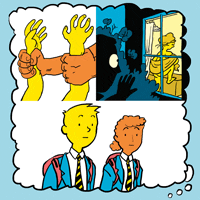
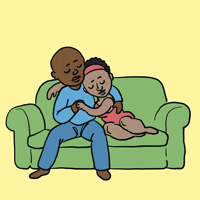
Using this resource
From our piloting and testing phase this Talking Mats sexual health and relationship resource has been found to be very helpful for those working in this field but, it needs to be used with sensitivity and care. The options and images that we have developed are clear but are sometimes explicit. It is for this reason that this resource is not going to be available on our digital platform. It is important that practitioners using the resource are aware of the issues and think carefully about which topics and options are helpful for the young person they are working with before presenting them. Practitioners using this resource need to work in a context that enables the young person to access any ongoing support for issues that may arise.
Accessing this resource
To access this resource, you need to:
- Have completed the Talking Mats foundation course.
- Be familiar with your organisation’s child protection and adult support and protection procedures
- Be clear about why you are using this resource and for what purpose for example to explore sexual relationships in general or to open up discussions about harmful sexual behaviour. You need to be experienced enough to be able to adapt the resource for those different contexts.
- Book onto our advanced seminar which we are hosting on the 18th of September 1:00 PM to 3:00 PM in conjunction with the REACH multidisciplinary team. This seminar allows for the context, challenges, risks and benefits of using the resource to be fully explained. This will include best practice examples and impact stories. It will give you the opportunity to explore the resource further and to ask any questions. The cost is £80 per participant and this covers the resource and the seminar.
Click here to book your place on this Advanced seminar. Places will be limited so make sure to book soon. Resources will be posted out the week before the seminar.
This week’s guest blog, the first of 2 from the authors (Lois Cameron, Nikky Steiner and Luccia Tullio), describes the development process of a set of symbols aimed at supporting practitioners to reflect on the role of identity within their practice.
Every person has their own unique identity, just like they have their own unique fingerprint.
Identity is about how we see ourselves and how the world sees us.
Background
The Royal College of Speech and Language conference 2021 was titled ‘breaking barriers and building better.’ Professor Harsha Kathard from the University of Cape Town gave the keynote presentation and reflected on the key role understanding identity has in clinical practise, stating that ‘understanding identity is key to inclusion’. Secondly, she stressed that if we want to develop better services and support then ‘Turning the gaze to reflect on our positionality is central to change’ .Ash R et al (2023) in their editorial for the British Medical Journal highlight how interventions normally focus on single categories of social identity and ‘fail to account for the combinations of, or intersections between, the multiple social characteristic that define an individual’s place in society.’ They argue that ‘systems of care may consequently overlook overlapping systems of discrimination and disadvantage and exacerbate and conceal health inequities.’
The Development group
Following feedback from clinicians and people who use Alternative and Augmentative Communication (AAC) a working group was formed in March 2021 to explore the role of identity, diversity, equality and inclusion with in AAC practice.
Communication Matters and AAC networks within the UK advertised the group and 12 people responded. These people came from a range of organisations and had a range of lived experiences of diversity including people who use a communication aid to help them communicate. The work was funded by the Central London Community Health Trust and Talking Mats Ltd facilitated the meetings and the work
The group worked shaped the resource by reaching a consensus about the components of life that contributed to identity. In the end the group agreed on gender, sexuality, disability, race, neurodiversity, culture, family structure, voice, bilingualism, religion, mental health, personality, politics, intimacy, connecting with others and occupation. The process of developing the symbols was hugely helpful in unpicking what was actually meant by the various aspects e.g. voice. The original image for voice represented accents but the group discussion shaped the image to represent much more so the final image included a rainbow flag, a more general sound wave to represent tone, a Spanish word and an image to represent disability. As one group member said ‘my cerebral palsy is part of my identity. If I am having a voice I want to reflect that identity – I want a cerebral palsy voice’. Identity and the issues surrounding it can be emotive but the focus on the symbols helped contain the emotion and supported group members to listen to the perspective of others.
The whole iterative process of developing the resource and clarifying what the symbols should look like allowed the group to be clear about the individual meanings of abstract topics. This wider understanding was captured in a glossary to go alongside the symbols. For example, Identity has the following definition: Every person has their own unique identity, just like they have their own unique fingerprint. Lots of different characteristics make up our identity. This is what makes us different from other people. Sometimes we may share some of these characteristics with other groups of people, which can also be part of our identity. Identity is about how we see ourselves and how the world sees us.
Equality, Diversity and Inclusion: a visual framework to support the exploration of Identity within practice.
The resource is seen as a support for constructive reflection by practitioners on identity and allows them to consider the different aspects of their patients’ lives that may impact on their interventions. The final Talking Mats symbols have the suggested top scale of ‘I considered a lot’, ‘I considered a bit’, ‘I have not considered yet ‘. It could be used individually or by a team as a group discussion tool.
As the resource uses the Talking Mats framework, it is recommended that practitioners have completed their Talking Mats foundation level training
If you are interested in completing Talking Mats Foundation Training, you can see the training options in our shop here.
References
Kashard H 2021 Keynote breaking barriers and building better The Royal College of Speech and Language conference.
Ash Routen, 1 Helen-Maria Lekas, 2 Julian Harrison, 3 Kamlesh Khunti1,2023 Interesectionality in health equity research BMJ 2003 https://www.bmj.com/content/383/bmj.p2953
As of Monday 10th June, our new address will be:
16A Beta Centre
Stirling University Innovation Park
Stirling
FK9 4NF
All other contact details will remain the same.
Please bear with us as we get our systems up and running again after the move – there may be a delay in responding to enquiries over the next few weeks.
Keep an eye on our social media channels for updates on our office move! Thank you all for your continued support.
Talking about sensitive issues can be challenging at times. We are so excited to publish this guest blog from Julia Pollock, Highly Specialist Speech and Language Therapist (SLT) from the REACH team in Perth, Scotland, explaining how a newly developed Talking Mats resource helps to open up conversations with young people about sex.
REACH is a unique team, one of a kind in Scotland, that provides intensive support for care experienced children and young people on the edge of care in Perth & Kinross. We are a multidisciplinary team bringing together professionals across health, education, social work and youth work. This allows us to provide prompt specialist care, while limiting the need for referrals to multiple agencies.
My colleague, Janie Scott, and I have worked for REACH since its inception, as Highly Specialist Speech and Language Therapists. Research shows that more than 60% of care experienced young people have some kind of speech, language and communication need (SLCN) and at REACH we work on the assumption that our young people may have an SLCN – until proven otherwise. This means that we routinely offer communication assessments and support to every single young person (and their parent/carers), in addition to keeping inclusive communication at the heart of everything we do. Adopting this approach ensures that none of our young people have to struggle with communication difficulties unsupported.
Working in a multidisciplinary team with a heavy social work contingent has been a very different experience for Janie and I. The team were open to our training and approaches and allowed us the freedom and autonomy to shape our own SLT service.
One of the first things we did at REACH was to introduce Talking Mats. We are both Talking Mats Licensed Trainers. All our REACH staff, as well as any other colleagues across the council and NHS who also work with our young people are Talking Mats trained.
Despite some initial scepticism around using pictures with teenagers, the resource has since proven to be incredibly useful and engaging for this particular client group. It has now become a staple resource that our staff will reach for regularly to facilitate conversations with our Young People and to help them express their views on complex issues.
Our young people can occasionally find themselves in conflict with the law and wrapped up in the complexities of the criminal justice system, as a result of their often disadvantaged backgrounds, and/or due to a range of ongoing challenges such as developmental trauma, social emotional and mental health difficulties, and/or Speech, Language and Communication Needs (SLCN). In addition to supporting REACH clients through their criminal justice journey, our team also specialise in harmful sexual behaviour assessments, for both internal and external clients.
The idea for a Talking Mats resource for harmful sexual behaviour initially came from one of our Senior Practitioner Social Workers, Amy MacKinnon, who suggested that Talking Mats might be a useful tool to support their harmful sexual behaviour assessments (AIM3). The assessment, which involves interviewing the young person about incredibly sensitive and personal issues, can be quite confronting for young people. We discussed the possibility of having visual resources which would not only cater to the SLCN of our clients, but that would also make the assessment feel less intimidating for the young people, encouraging more open and honest responses.
We often start by assessing a young person’s existing level of sexual knowledge and understanding, as how can young people possibly share their version of events if they do not understand the basic concepts of which they were being accused of?
This includes exploring their understanding of the language around sexual physiology and anatomy, in addition to the social and legal considerations of sexual behaviour. The introduction of this resource allowed us to explore existing knowledge much more effectively than we had previously, with a more logical progression of concepts ranging from the very concrete language for body parts, through to more abstract ideas such as consent. More careful consideration of the young person’s language level really helps to ensure that the Young Person’s responses are accurate. We recognised that our existing pictures/resources needed development and so I approached Talking Mats to ask if they would consider working with us to create an official Talking Mats resource using their own artwork and branding. I know from experience that their artist, Adam, always does a fantastic job creating simple images that are so easily understood while also being sensitive and inclusive.
We developed a small working group with a handful of REACH and Talking Mats staff who have focused on developing a new healthy relationships resource to open up these tricky conversations. We have now completed the pilot stage, and have a fantastic resource. Talking Mats did not disappoint and as expected, they worked wonders with the images!
One interesting development along the way was the group’s reflection that the resource had felt quite negative and that perhaps we should keep a more neutral stance when developing the concepts – leaving room for much more general (or even positive) discussions around sexual development too. This allowed us to expand the resource to include concepts relating to puberty and gender identity. We felt that this would make the resource more far-reaching and impactful, while still retaining the option to use the more niche resources for addressing harmful sexual behaviour, when required.
The feedback we have received has been overwhelmingly positive, with comments such as ‘It’s amazing’ and ‘We’ve been sitting waiting for a resource like this.’ Those trialling the resource for us unanimously felt that the resource helped them to discuss the topic with their clients, helping to ‘open up’ discussions that would otherwise be more challenging to initiate. We have also received a lot of positive feedback on the clarity of the concepts and images; the consensus being that the visuals are easy to understand and unambiguous. This is fantastic feedback given the complex and abstract concepts we were tackling with this resource!
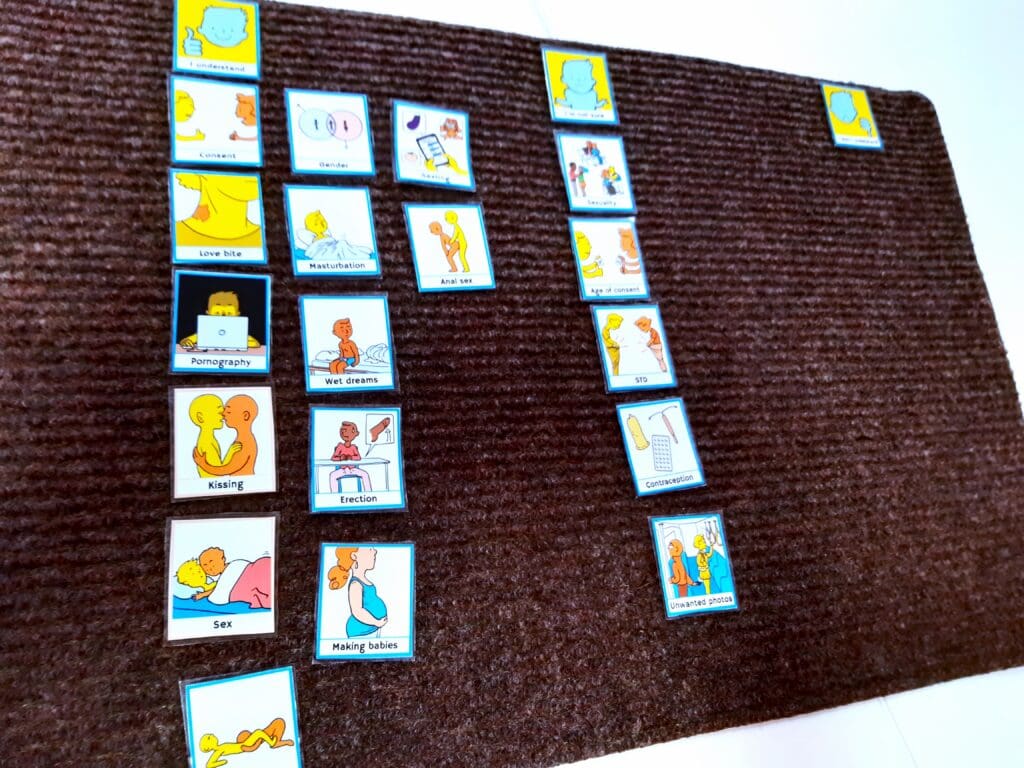
We are looking forward to sharing more information about the project and resource in an Advanced Webinar for practitioners who have already completed Talking Mats Foundation Training, in September 2024.
Look out for the second part of Julia’s blog next week, to read one of the powerful examples of the positive impact this resource has already had.
Inspired to think about Talking Mats Foundation Training? Find out about all the options we have available here.
Thank you to Joan Murphy and Jill Bradshaw for this blog that demonstrates the criteria required for a Talking Mat to be a Talking Mat.
Talking Mats is now an established tool to help people express their views but the way in which is it used can vary and, at times, practitioners may adopt a ‘Talking Mats approach’ which is not truly a Talking Mat.
One of the activities of the Talking Mats Research Network was to establish the criteria which define a ‘true’ Talking Mat and we hope this blog will help clarify that.
The main components of a Talking Mat are
- A space to display the symbols – physical or digital
- A Top Scale
- A Topic for discussion
- Options which relate to the Topic.

In addition, the Research Network identified the following 3 main criteria to verify a Talking Mat:
- Are open questions used within the Talking Mat? For example, ‘How do you feel about x?’ rather than ‘Do you like x ?’ Sorting options into categories is not a true Talking Mat.
- Is the top-scale consistent with Talking Mats principles? The top scale needs to be such that thinkers are able to use the top-scale for reflection when asked an open question relating to a particular option.
3. Is the purpose of the Talking Mat to gain views on a particular topic or issue? The Talking Mat needs to be used in a way that provides an opportunity for the thinker to give their views about the topic. Of course, people with more complex communication challenges may not provide any additional information about their views, other than placing the symbol. However, if the placement of the option is used as a potential opportunity for a discussion, then this can be seen as a Talking Mat.
Further explanation can be found here
Training in Talking Mats covers the criteria and how to achieve it in more detail and is always advised to use this innovative tool to it’s full potential.
When this blog from Janie Scott, a Talking Mats Licenced Trainer with Perth and Kinross Council came in I was a bit stumped. There was a lot that I wanted to highlight but I didn’t want to focus on one thing and detract from others:
- The importance of understanding and applying the Talking Mats framework allowing conversations on topics not covered by our resources.
- Demonstrating how Talking Mats can enable the voice of the child to be heard, upholding Scotland’s Promise to care experienced children, young people, and families.
- A model for embedding Talking Mats in a service.
I decided to go with everything. In 2 parts.
Part 1
Talking Mats; UNCRC, the Promise and hearing the thinker:
Janie Scott, (Highly Specialist SLT Perth & Kinross Council)
Scotland is currently progressing with the incorporation of the United Nations Conventions on the Rights of the Child (UNCRC) through the UNCRC (Incorporation) (Scotland) Bill.1 The UNCRC, article 12, states that, ‘children have the right to give their opinions freely on issues that affect them. Adults should listen and take children seriously.’
Talking Mats enables rights-based participation for children, allowing them to form and express views freely. It allows others to understand the issues and, as stated above, have those views taken seriously 2
The ‘voice’ of the child is central to The Promise3. Talking mats should be considered the ‘scaffolding’ to enable a voice to be heard.

Last year I rolled out Talking Mats foundation training to Social Workers and Senior Social Care Officers working within Services for Children, Young People and Families, in Perth and Kinross Council. Fundamental to Talking Mats is the framework; the ability to use an appropriate top scale, open questions, silence and pass control to the thinker. Having demonstrated the importance of the framework in the training, we then went on to develop symbol sets specifically related to the work of the Social Work teams. These covered a wide range of topics including:
- sleep
- becoming a foster family
- contraception
- sexual knowledge
- contact arrangements,
- behaviours that adopted children think might be difficult to deal with
- grief
- school life
- triggers (related to drugs and alcohol)
I was privileged to hear several reports of how Talking Mats had allowed the voice of the children and young people to be heard which had a direct positive impact on their lives. Here are two powerful examples from a parent and a social worker.
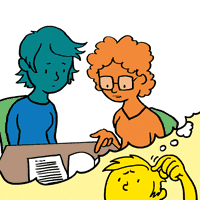
Parent
” I have really enjoyed using Talking Mats. It lets me see everything in an organised way. I really like that. It has also shown me the progress I have made; I have found using an advocate really useful in the past but I don’t need to use an advocate any more as I feel more confident. I used to struggle with making decisions but this mat made me realise that I make decisions all the time and they are not wrong decisions.”
Assessing Social Worker for Kinship Care
“As part of my role, I need to find out information from teenagers on how they feel their kinship placement is going. Typically I find that many teenagers give one word answers or sometimes they tell me what they think I want to hear. Talking Mats has been useful in my work in allowing teenagers to open up. It has also been useful with children who have English as an additional language. The children did speak English, but it made it easier to get their ‘story’ from them.
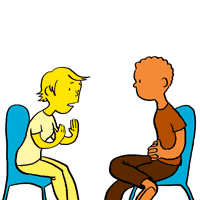
“There was one particularly quiet and reserved teenage boy who was reluctant to share information. The Talking Mat allowed him to tell me much more than when I had initially questioned him. Through the Mats we were able to distinguish the difference he felt between living at home and living with his kinship carers. The Talking Mat enabled him to express that his kinship carers were open to having discussions with him and talking about his worries whereas his Mum did not want to talk about his worries. this was something that I was able to support him in sharing with his Mum as part of the plan for him to return home.“
To uphold Article 12 services must be proactive in creating opportunities to listen to the voice of the child. Talking Mats is enabling the voices of children, young people and families to be heard in Perth and Kinross. This voice is influencing key decisions in their lives across a variety of forums including the Children’s Hearing System, Kinship Panels, and Child’s Plan Meetings.
- Children’s rights legislation in Scotland: quick reference guide – gov.scot (www.gov.scot) ↩︎
- Can Scotland be Brave – Incorporating UNCRC Article 12 in practice – gov.scot (www.gov.scot) ↩︎
- Foundations of the promise – The Promise ↩︎
Talking Mats Director, Margo MacKay, will be presenting with Laura Lundy, Professor of International Children’s Rights, QU, Belfast on Wednesday 1st of November, 2023 at NHS Education Scotland webinar; ‘The voice of the infant and child; rights- based participation for children and young people’
For more details please see the NES website.
Read ‘Can Scotland Be Brave, Incorporating UNCRC Article 12 in practice here
Question: What is a Talking Mat?
Answer: Talking Mats is a visual communication framework which supports people with communication difficulties to express their feelings and views.
That’s what our website says in black and white and you wouldn’t be alone in thinking it actively excludes people with a visual impairment. However, one of our Licenced Trainers and Speech and Language Therapist, Olivia Ince recently got in touch to share a story of a creative and innovative approach to using the tool; a Braille Talking Mat.
The mat was facilitated by an Outreach worker for Children with disabilities (the listener) who had been trained in Talking Mats by Olivia. The young person sharing their opinions (the thinker) has a genetic neurodegenerative disease which affects the nervous system, causing progressive difficulties with physical and cognitive skills including communication impairment and vision loss. The Outreach worker and Olivia worked on the project together.
Trialling a Braille Talking Mat
We have been working together on a project to trial a Braille version of a Talking Mat. Talking Mats is a visual tool, but we knew that a Braille version could work in theory if some adaptations were made and if the thinker had the cognitive ability to understand the Talking Mats process.
We thought a Talking Mat would be a good approach for this young person because it could help to make the conversation more engaging and create a more balanced interaction than asking a long list of questions. For this young person, the Talking Mat was primarily a thinking tool.
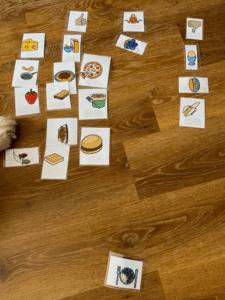
Introduction:
We started the process by introducing a concrete, familiar topic; food with the topscale of ‘like/ don’t know / don’t like. Using a concrete topic like food meant that the listener could discuss the responses with the young person’s wider network and find out if the mat was a true reflection of food preferences, thus giving further insight into the young person’s understanding of the Talking Mats process.
Adaptations:
The support team had access to a Braille machine which meant that a Braille sticker could be added to each laminated symbol card in the Talking Mat. Having both Braille and symbols on the cards meant that the Talking Mat was meaningful to the thinker and the thinker’s network, as a photo could still be taken as a record and to allow any actions to be followed up.
As usual, the listener handed the card to the thinker which allowed them to read the Braille.
- After reading each option card, the thinker then passed the card back to the listener and told the listener where to place each one under the top scale.
- At the end, the listener asked the thinker if they would like to read the Braille on all the cards again as part of the review and reflect. The thinker did not wish to do this, so the listener verbally reviewed the Talking Mat for the thinker.
We considered the alternative approach of guiding the thinker’s hand across the top scale allowing them to read the Braille after having read the Braille on each option card. The thinker could then have placed each option card under the top scale with some hand over hand guidance, but this was decided against due to the increased physicality and cognitive load of this additional action for the thinker.
Reflections:
When the Talking Mat was initially discussed the young person expressed curiosity about what it was and how it worked. Throughout the session they appeared to feel involved, enjoying the tactile and interactive nature of the Talking Mat process, increasing engagement with the process.
The Talking Mat helped the thinker to share their views on a wider variety and greater number of options than what would have been possible in a verbal conversation on the same topic. The Talking Mat also facilitated a more structured, empowering and accessible interaction for the thinker and created the time and space for them to share their views.
Now that this trial Braille Talking Mat has demonstrated that the thinker can engage in the Talking Mat process from start to finish and that they seemed to enjoy sharing their views using this tool, in future further Talking Mats could be used to help the thinker share their views on more abstract, emotive topics.
Overall, this project has shown that a Braille version of a Talking Mat can successfully support people who have a visual impairment to share their views.
If you would like to find out more please contact us on info@talkingmats.com and questions can be passed onto Olivia.
Over the past few years Cornerstone and Talking Mats have been developing a resource to allow anyone using their services to be more involved in recruiting their own support staff enabling them to express what personal qualities, skills/knowledge and behaviours are important to them.
Why was there a need for this resource?
Colleagues Kerri Bellingham (Recruitment coordinator) and Debbie Masson (HR Projects and Research Advisor) knew involvement was a big part of their organisational ethos but believed they ‘could do it even better’.
This together with feedback from a person supported by Scottish organisation Cornerstone prompted two team members to re-examine the process of recruitment and how everyone can be more involved
Scottish Charity Cornerstone has been providing care and support for people with learning disabilities, autism and complex care needs across Scotland for over 40 years. The Organisation prides itself on putting the people it supports at the heart of service delivery. There is a strong ethos of offering choice and control ensuring care and support is person-centred.
Kerri and Debbie set out to create an approach that would directly reflect the National Involvement Network Charter;
“We want to be involved in choosing the people who support us. This includes our support worker, key worker, managers and other staff, volunteers and our advocates. This means we must have the choice to be involved in; writing job descriptions and person specifications, planning interview questions, taking part in interviews and deciding who gets the job”
(NIN Charter, statement 5)
The aims for the recruitment resource were for people supported by Cornerstone to;
- be more involved in recruiting their own staff if they want to be
- be given the freedom and ability using these tools to express what values, skills and behaviours are important to them, and feel they are being listened to
- gain new skills and increase their confidence
- develop a ‘best-match’ approach that would identify ideal candidates suited to an individual’s support needs, preferences and interests with a view to improving outcomes and continuity of care
Providing a way for the supported person to communicate their opinions is where Talking Mats came in.
Development
Development of any new Talking Mats resource requires research and careful planning. A focus group was held with people who received services from Cornerstone and the staff that supported them. There was a lot of discussion about what would be a given, for example, being kind, caring or compassionate as well as other key attributes. A lot of flip chart paper was used but the group was happy with the structure agreed on.
The 3 topics agreed on were:
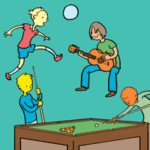
Interests
This topic asks the thinker (the person supported) to consider their interests and the activities they enjoy, or goals they would like to achieve, so these can be considered in the matching process. These requirements can then form part of the role profile and / or also inform the interview questions.
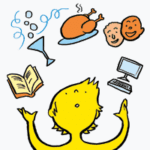
Skills / Knowledge
Again, this allows for appropriate description of role, for example noting if driving skills are required, would competence and knowledge of technology be helpful , or have they a good understanding of the local community so socialising or networking can be promoted and local activities or opportunities maximised?
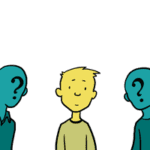
Type of Person
This topic can also contribute to a Person Specification but the concepts are more abstract, and the thinker considers what attributes in a potential support worker are important to them.
Kerri, Debbie and everyone involved in the project believe this tool will “enable us to more closely match the people we support with their ideal member of staff whilst ensuring they have a pivotal role in the process”.
Cornerstone are looking for Organisations to help them trial this new resource. If you are interested and are an organisation who provide residential or day care and want to involve service users in
- recruitment and /or
2. reviewing their care package and give feedback on their staff
then please get in touch by the 21st of July. We will send you the resource and in return we ask that you use it at least 2 times between now and October provide feedback. Please contact paula@talkingmats.com
 Online training login
Online training login 



